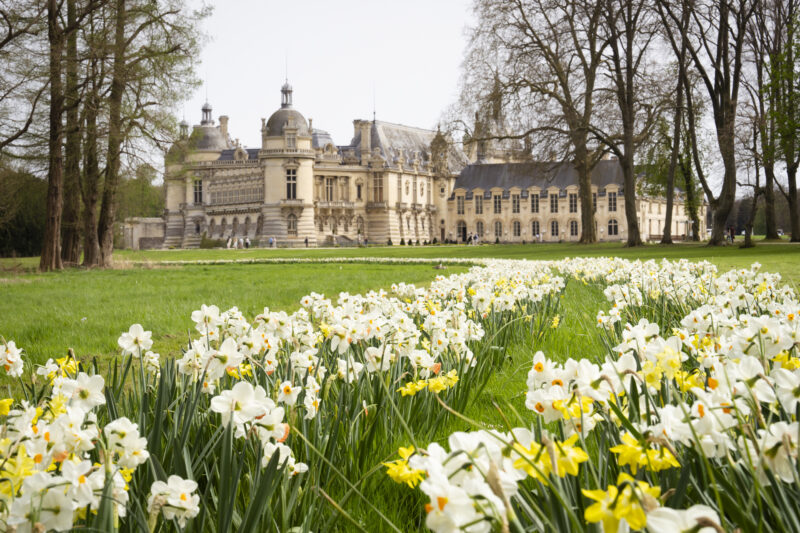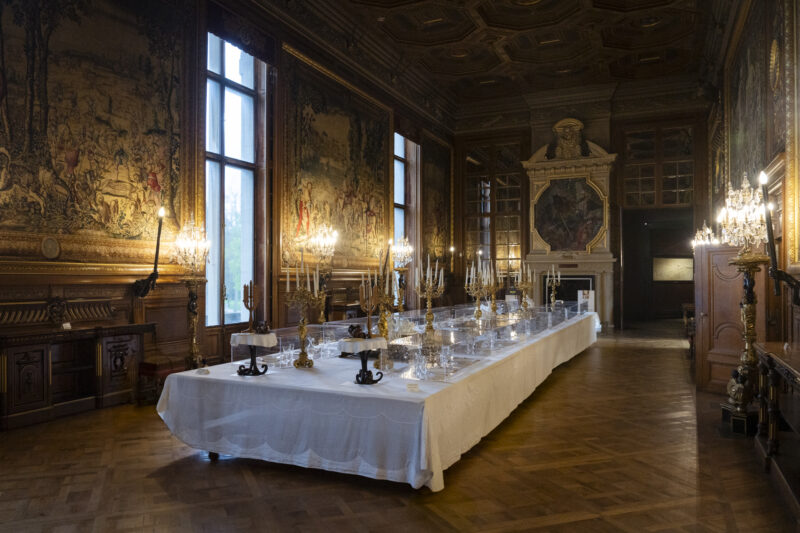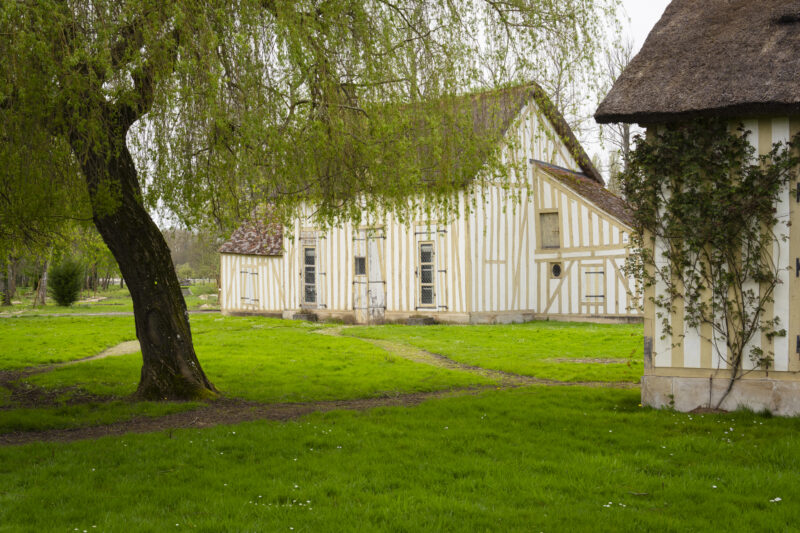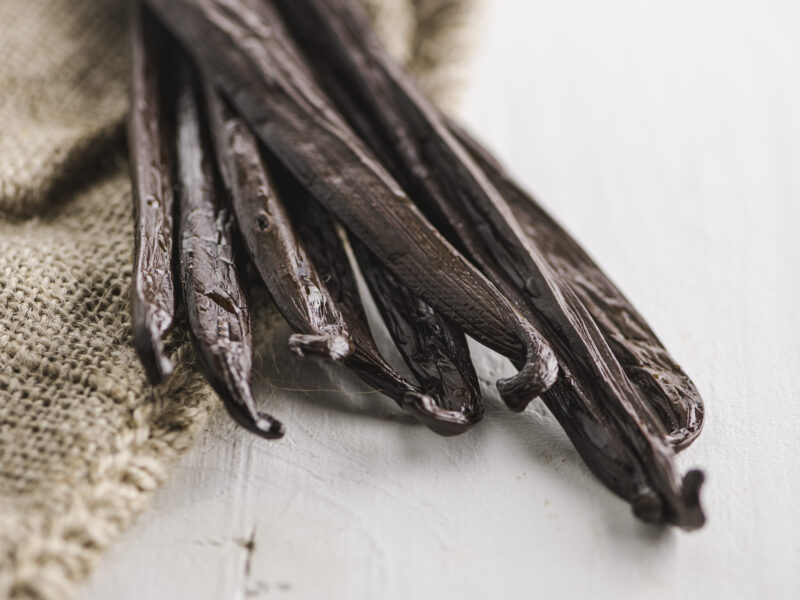Chantilly cream
Chantilly whipped cream is the one and only whipped cream preparation that tastes absolutely delicious with all types of desserts. I went to the birthplace of this delicious cream and took a whipping cream course with none other than the Confrérie des Chevaliers Fouetteurs de Crème Chantilly. I'm now a certified Ecuyer Fouetteur with the mission of being an ambassador for this deliciousness. So, what is crème Chantilly, and how is it prepared? I’ll fill you in on the details and, with a little practice, you’ll be whipping up this delicious treat in no time!

Chantilly cream or whipped cream?
Chantilly and regular whipping cream are basically the same thing, as long as you follow the recipe and use the right ingredients. But the industry also used the term "Chantilly cream" for whipped cream in spray cans, and that's where things went wrong. To set the record straight and bring real whipped cream into the spotlight, the Confrérie des Chevaliers Fouetteurs de Crème Chantilly was founded in 2007. Today, the term "crème Chantilly" is strictly regulated. It refers to whipped cream with a fat content of at least 30% with only sugar and flavoring as the other ingredients.
Confrèrie des Chevaliers Fouetteurs de Crème Chantilly
The Confrérie des Chevaliers Fouetteurs de Crème Chantilly is an association dedicated to promoting the real whipped cream of Chantilly. These passionate cream lovers offer workshops and demonstrations that explain the rich history and technique of making crème Chantilly. Their goal is to educate people about the real taste of freshly whipped cream and fight the use of aerosol whipped cream.

The rich history of Chantilly whipped cream
The history of Chantilly whipped cream is a bit of a mystery. There are lots of different stories about how it came to be. What we do know for sure is that this much-loved dessert is enjoyed all over the world.
Neige de lait, the precursor to cream Chantilly
A recipe for neige de lait, which translates as milk snow, first appeared in England in 1545. The dessert was made with cream whipped with egg yolks and sugar, which was then flavored with rosewater and served with apple and wafers.
During the Italian Renaissance in the 16th century, dairy products were processed and eaten more often. At the court of the De' Medici, people ate a whipped cream that was then named lattemelle. The recipe was similar to that of neige de lait and the cream was eaten with cheese or fruit purée. When Catherine De' Medici arrived at the French court as the bride of King Henry II, she brought the recipe for neige de lait in her suitcases.
Around that time, other recipes for neige de lait appeared in other European countries. But it would be another two hundred years before the name crème Chantilly was used.
Did François Vatel invent Chantilly cream?
Many think that François Vatel, who was the maître d'hôtel and who organized some of the most impressive balls and festivities at the court of Louis XIV, invented crème Chantilly. But this isn't quite right. Vatel was the father of fine dining and table decoration in France, but he was never a chef. He did, however, die in Chantilly.

Le Grand Condé transformed the Château de Chantilly into a stunning venue with gardens designed by André Le Nôtre when he invited his cousin, King Louis XIV, at the end of April 1671. The feast was to be impressive because the Prince de Condé had just reconciled with the king again. Le Grand Condé enlisted the help of François Vatel to make everything run smoothly. It was Friday, April 24, and on Fridays back then, people didn’t eat meat, only fish. There was a lot on the line at the castle that morning.
Some of the fireworks hadn’t gone off the day before, and some guests weren’t served roast at their tables. The afternoon passed, and Vatel still hadn’t received his orders of fish. The bad weather made fishing difficult, and delivery was delayed. He only had a small box of fish for 2,000 guests. Vatel couldn't handle the damage to his reputation and thrust himself on his sword in his room. An hour later, the fish was delivered and Gourville, Vatel's right-hand man, took over. Despite the tragedy, the feast was a success, and King Louis XIV left satisfied and fulfilled.

At last, Chantilly cream!
Chantilly cream really made a name for itself during the 18th century. The Prince de Condé had near Chantilly castle a dairy farm that everyone admired. The areas where butter was churned were made of marble, and the cream was kept in porcelain jugs. Coffee and cakes were prepared in the farmhouse and served to the prince's guests in the neighboring Hameau. This addition to the castle was built in 1775 and consisted of seven thatched cottages with somptuous interiors.

This was also the time when sugar cane from islands under French rule was being imported for use on the Continent. Somebody, probably a cook, dairy farmer, or pastry chef, had the idea of putting sugar in the jugs with the cream. The cream was whipped and flavored as usual. In June 1784, the whipped cream was served to the prince's guests, including the Austrian Baroness of Oberkirch. The Baroness was delighted with the cream and wrote in a letter about how delicious the whipped cream was. She called the sweet and delicate cream crème de Chantilly.
What do you need to make Chantilly cream?
Heavy Cream
To make a great Chantilly cream, start with really fresh cream with at least 30% fat content. Don't use light cream, as it doesn't have enough fat to whisk air into the cream. Make sure the cream is cold because warm cream can't trap air, so it won't become fluffy.
Sugar
Use icing sugar to make Chantilly cream. It mixes in really easily with the cream. As a general rule, you'll want 40 grams of sugar for every half liter of cream.
Aroma
Classic Chantilly cream is made with vanilla, which you can add in different forms. Use vanilla extract or remove the vanilla seeds from the pod. You can also choose vanilla powder, which is the entire vanilla pod ground. At the Confrèrie, they call this vanilla caviar. You can’t get a more intense vanilla flavor than with vanilla powder; so be careful and only add a small amount to the cream.

All about vanilla, Tahiti’s black gold
But you can also add other flavors like rose or orange blossom extract, or even liqueurs like crème de cassis or Amaretto.
Mixing bowl with a cul-de-poule shape.
You'll also need a cul-de-poule-type mixing bowl. This is a stainless steel mixing bowl with a round bottom. The semicircle shape is great for whisking all kinds of sauces. It's important to keep the mixing bowl cool at all times. So, do not use a plastic bowl.
Whisk
Chantilly cream is beaten by hand. You'll need a whisk of at least 35 cm to do this properly. Make sure the head of the whisk is convex so you can introduce a lot of air into the cream. With a whisk that is too small, your Chantilly cream won't become airy and thick.
What do you eat Chantilly cream with?
Creamy Chantilly cream pairs perfectly with fresh and baked fruits. But feel free to dollop a spoonful of the cream on waffles, pancakes, and your favorite ice cream. You can also use it as a filling for pastries. Chantilly cream is particularly delicious with chocolate in all its forms. Think hot chocolate, chocolate mousse, or chocolate fondant.

How to make Chantilly cream in four simple steps.
Ingredients:
- 500 ml cold heavy cream with min. 30% fat content
- 40 g icing sugar
- A few drops of vanilla extract or ½ teaspoon of vanilla powder
-
Step 1: whisk air into the cream - foisonner la crème
The first step is to whisk air into the cream. This is called foisonner la crème. Take a round-bottomed mixing bowl and a whisk and put them in the refrigerator for half an hour. Then, pour the cold cream into the mixing bowl and whisk air into the cream so that its volume increases. This technique produces many small air bubbles in the cream. Keep whisking until no more air bubbles are formed.
-
Step 2: thicken the cream - enrubaner la crème
As you continue to whisk the cream, you’ll start to notice a change in texture. The cream is thickening. At this point, add the sugar and vanilla. Mix gently and taste the cream to see if it needs more sugar or vanilla.
-
Step 3: finalize the whipped cream - serrer la crème
Now take a firm grip on the whisk vertically and beat very quickly, with a steady pulse, until the whipped cream becomes firm. The tricky part is knowing when to stop beating so that the whipped cream doesn't turn into butter. For this, it's important to pay close attention to the color. The whipped cream should stay white as snow and not turn yellow like butter.
-
Step 4: the whipped cream test
The crème Chantilly is ready when the following conditions are met:
- The whisk should be able to stand by itself vertically in the whipped cream.
- Take a little whipped cream on the tip of the whisk. The whipped cream should form a beak.
- Turn the bowl with the crème Chantilly upside down. The whipped cream should stay in place for a minimum of 4 seconds.
All you have to do now is indulge in the delicious crème Chantilly immediately, without putting it in the refrigerator.